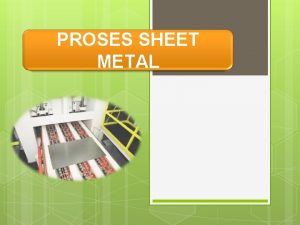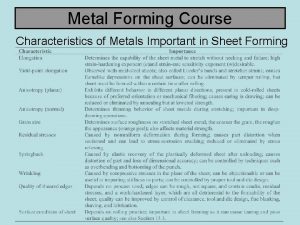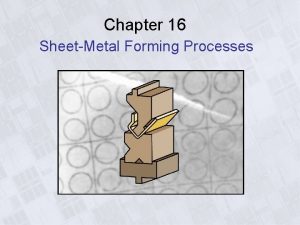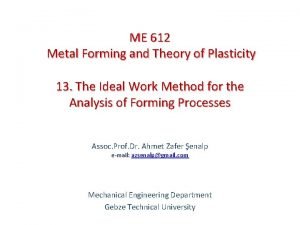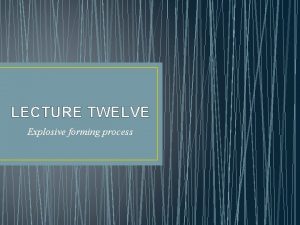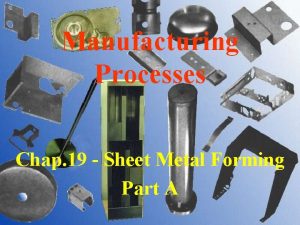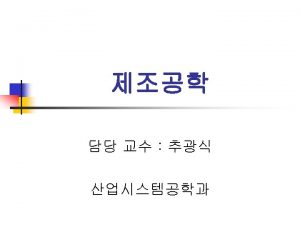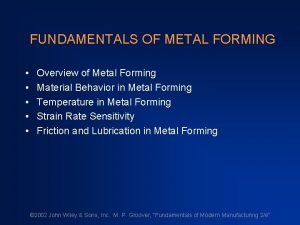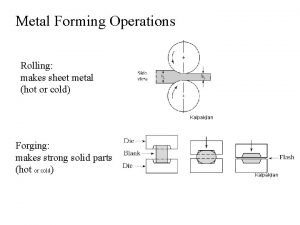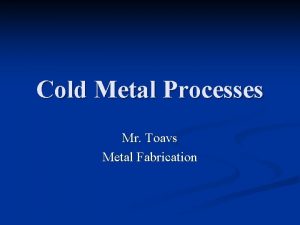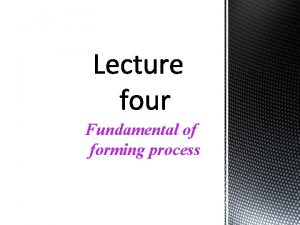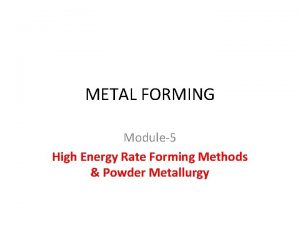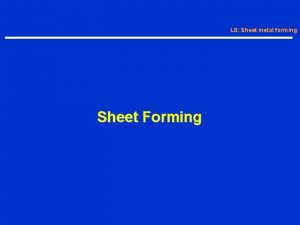Metal Forming Principle of Forming Hot and Cold










- Slides: 10

Metal Forming Principle of Forming, Hot and Cold Working, Rolling, Principle of Rolling

Rolling Swaging Forging Wire & Tube drawing Extrusion

HOT WORKING OF METALS • Plastic deformation of metal carried out at temperature above the recrystallization temperature, is called hot working. Under the action of heat and force, when the atoms of metal reach a certain higher energy level, the new crystals start forming. This is called recrystallization. When this happens, the old grain structure deformed by previously carried out mechanical working no longer exist, instead new crystals which are strain-free are formed. • In hot working, the temperature at which the working is completed is critical since any extra heat left in the material after working will promote grain growth, leading to poor mechanical properties of material.

Advantages of Hot Working 1. No strain hardening 2. Lesser forces are required for deformation 3. Greater ductility of material is available, and therefore more deformation is possible. 4. Favorable grain size is obtained leading to better mechanical properties of material 5. Equipment of lesser power is needed 6. No residual stresses in the material.

Disadvantages of Hot Working 1. 2. 3. 4. 5. 6. Heat energy is needed Poor surface finish of material due to scaling of surface Poor accuracy and dimensional control of parts Poor reproducibility and interchangeability of parts Handling and maintaining of hot metal is difficult and troublesome Lower life of tooling and equipment.

Cold Working of Metals • Plastic deformation of metals below the recrystallization temperature is known as cold working. It is generally performed at room temperature. In some cases, slightly elevated temperatures may be used to provide increased ductility and reduced strength. Cold working offers a number of distinct advantages, and for this reason various cold-working processes have become extremely important. Significant advances in recent years have extended the use of cold forming, and the trend appears likely to continue.

Advantages of Cold Working 1. No heating is required 2. Better surface finish is obtained 3. Better dimensional control is achieved; therefore no secondary machining is generally needed. 4. Products possess better reproducibility and inter-change-ablity. 5. Better strength, fatigue, and wear properties of material. 6. Directional properties can be imparted. 7. Contamination problems are almost negligible.

Disadvantages of Cold Working 1. Higher forces are required for deformation. 2. Heavier and more powerful equipment is required. 3. Less ductility is available. 4. Metal surfaces must be clean and scale-free. 5. Strain hardening occurs ( may require intermediate annealing ). 6. Undesirable residual stresses may be produced

Hot Rolling




